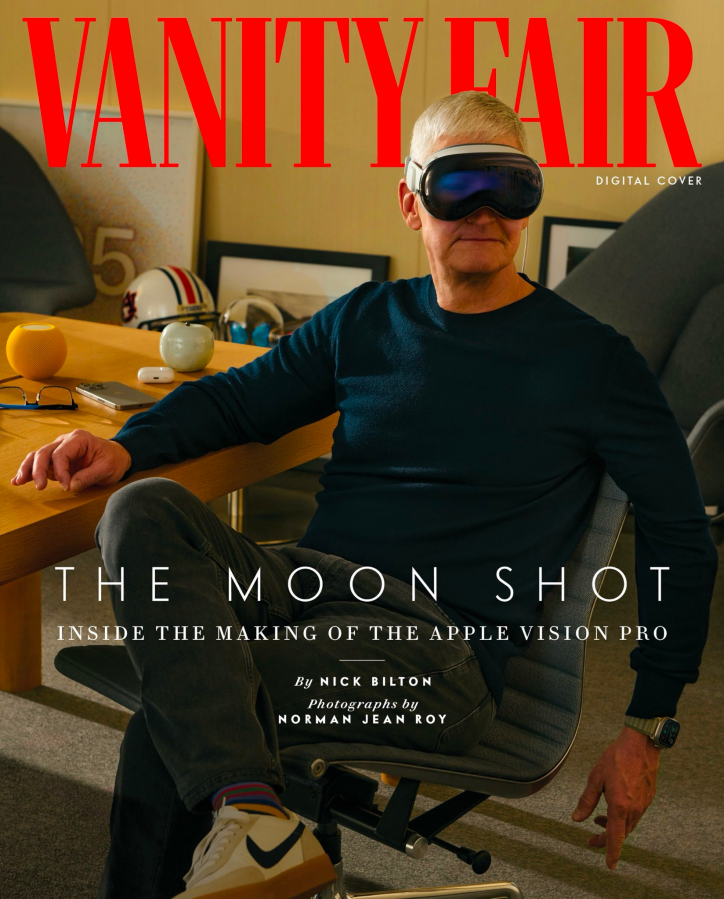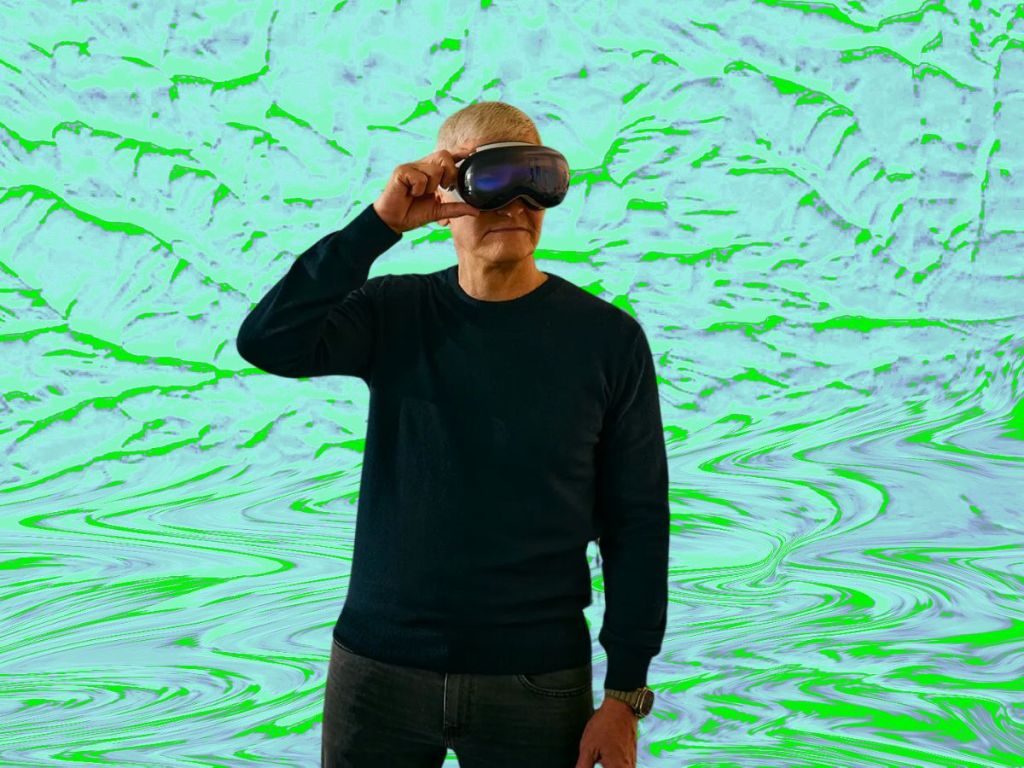Apple’s highly-anticipated Vision Pro mixed reality headset is now available in retail stores across the US with a hefty US$3,499 (AU$5,380) price tag.
To celebrate the launch of Apple Vision Pro, Tim Cook even graced the digital cover of Vanity Fair magazine wearing the headset publicly for the first time. In a memo, he reportedly even compared Vision Pro’s debut to the birth of iPhone, iPac and the Mac. Clearly, Apple has very high hopes for Vision Pro!

One small but important detail Apple fans noticed is the avoidance of words like “virtual reality” or “mixed reality” – preferring to call it “spatial computing”. At WWDC in 2023, Cook went through a 45-minute presentation on stage and the word “virtual reality” was not uttered a single time.
In the Vanity Fair interview, Cook even referred to the Vision Pro as the “unit” instead of, say, the “headset”. So what exactly is spatial computing, and why has Apple chosen to brand the Vision Pro as such?
Apple Vision Pro: The spatial computing era
First, what is “spatial computing”? According to the Harvard Business Review, it’s an “evolving” form of computing that merges our physical world with virtual experiences – in this case, using a device like Apple’s Vision Pro.
Of course, Apple is not the first to ‘invent’ the term. In 2003, “spatial computing” was used by MIT researcher Simon Greenworld in a paper that explored the concept. At the time, Greenworld defined spatial computing as:
“… human interaction with a machine in which the machine retains and manipulates referents to real objects and spaces. It is an essential component for making our machines fuller partners in our work and play.”
So, you could say it’s exactly what Apple is going for in the long term. It’s a new era that the company is trying to build.
Of course, Apple is not the first tech titan pursuing this. Meta, with the Quest headset that costs a fraction of the price (AU$799.99) of Vision Pro, is a fierce competitor in the space. There’s also Microsoft’s HoloLens, Magic Leap One, and the PlayStation VR2.
Spatial computing: How to use it?
The idea of spatial computing is to allow the user to interact with virtual objects in a way that smoothly corresponds with one’s physical surroundings. To achieve this, a series of technologies are used. These include, but are not limited to, eye-tracking, hand-tracking and voice recognition to respond to the user’s voice commands.
Here’s Apple’s own ‘tutorial’ on how to use the Vision Pro. All the wearer pretty much has to do is a series of ‘finger movements’ in the air, like pinching and tapping. YouTuber Canoopsy likened it to using an iPad.
Why ‘spatial computing’?
“Apple would never say that, and they probably won’t like that I’m saying that word… but the truth is it’s a really, really, really high-end virtual reality headset,” said OG online technology creator, Marques Brownlee.
Brownlee even made an entire video analysing this – and control and comparison are two main reasons why.
“If you come out with a new product and you associate it heavily with a word that the general public already uses or that a competitor already uses… you run the risk that the sentiment around that word might actually change [or] have a downturn at some point in the future,” Brownlee explained.
“Thus dragging your whole reputation of your product down with it,” he added.
Advertising executive Marcus Collins told The New York Times that being ‘different’ from the pack and calling Vision Pro a ‘spatial computing’ unit means Apple retains control over how it wants Vision Pro to be perceived.
“… no one knows what it is – and that provides Apple the opportunity to define it.”
This is, therefore, another branding and marketing strategy by Apple “… because of the ambitions that [Apple has]… to steer and control the vision towards mostly AR stuff,” said Brownlee.
How’s it like so far?
The headset – sorry, unit – is so far only available in the US, but reviews are pouring in and they’re largely positive.
Joanna Stern of The Wall Street Journal tested it for 24 hours, and noted that she was surprisingly productive with Vision Pro on. CNET’s Scott Stein said the device was a “stunning look at the future… but for anyone else, I’d recommend you get a free demo at an Apple Store, marvel at its features and wait and see,” he wrote.
Apple has yet to bring Vision Pro to Australia, but if you’re really desperate, Kogan is apparently selling the device for a casual AU$6,349. Purchase at your own risk.





